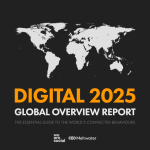By Chris Higgins, Senior VP – Marketing at Netcore Cloud
We all know the experience of downloading an app, failing to see the value in it, and quickly deleting it. We also know those apps that lie unused for months on our phones – we don’t want to delete it, but never seem to get around to using it. Then there are the apps we use regularly – weekly, daily, or hourly!
When the success of your digital business relies on user engagement with your app or website, retaining your customers’ attention becomes critical. Once a user uninstalls your app, you need to spend time and money to reacquire the same user.
How do the most addictive apps keep users away from the uninstall option? Enter Gamification.
Gamification in marketing and customer experience has been around for years. Digital platforms, however, have offered marketers the opportunity to gamify multiple elements of the user’s experience at once with an app, making it ‘sticky’ throughout their journey, more engaging, and worth returning to.
With traditional businesses, it is challenging to activate, manage and measure the impact of multiple simultaneous gamification elements.
But with so many brands adopting this model, how do you get gamification right? The key is in identifying the right elements that must be gamified and enabling the user to unlock the value in the app, often by engaging with more features.
Gamification Essentials
Apart from offering a measurable record of engagement, point systems are successfully able to encourage clear motivation in the form of rewards. An app developer is therefore now able to match the level of rewards to the most important actions. However, the points need to feel appropriately challenging to accrue and the rewards need to be encouraging to feel valuable.
A Leaderboard or a ranking of where you stand in comparison to other people can be very motivating – even when it is anonymous. Apps with large numbers of users often create multiple segments of users so that there are tiered leaderboards eg. “You are #2 on the ‘Sapphire’ leaderboard, rather than #10034 overall.”
Badges and Stickers earned for completing sets of actions promote both repeat actions’. Moreover, these can encourage the user to indulge with the app in diverse ways since each of these recognitions is offered for different actions.
Continually inculcating a sense of pride amongst users towards hitting a goal or completing a task, by highlighting progress is yet another observed to be a great way to establish a more emotive connection with the app. For instance, if an app says ‘your profile is 80% complete’, many people will be motivated to get it to 100%, which should have some sort of positive feedback.
Granting users the opportunity to form teams, even with strangers, and work towards tasks together helps them to develop a sense of identity and commitment to the app.
Gamification, when done right, can be so powerful that it could become the key element of the business model
A classic example of this would be wireless-enabled wearable technology, Fitbit, motivates its users to hit 10k steps and witness fireworks on their wristband. Fitbit is no exception; most fitness/exercise/health tracking apps follow heavy gamification towards encouraging continual engagement.
A recent study by Deloitte, has highlighted that training programs embedded with gamification brought down the overall duration of users to complete by a whole of 50%. Increased engagement means more revenue. American multinational software company Autodesk gamified their free trials with both in-game and real word prizes, increasing channel revenue by 29%.
Getting started…
The key is to initiate simple experiments to gauge the impact on users while addressing key drop-off points in a user’s onboarding & retention journey.
A smart marketer, therefore, looks out for small and easy experiments that are easy to roll out and roll back. Witnessing the success of one experiment, you could move to the next one. As they build up, your user experience becomes more heavily gamified and engagement follows.
MARKETING Magazine is not responsible for the content of external sites.











